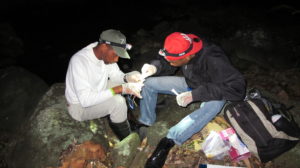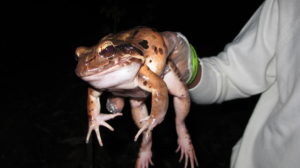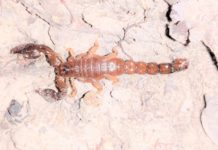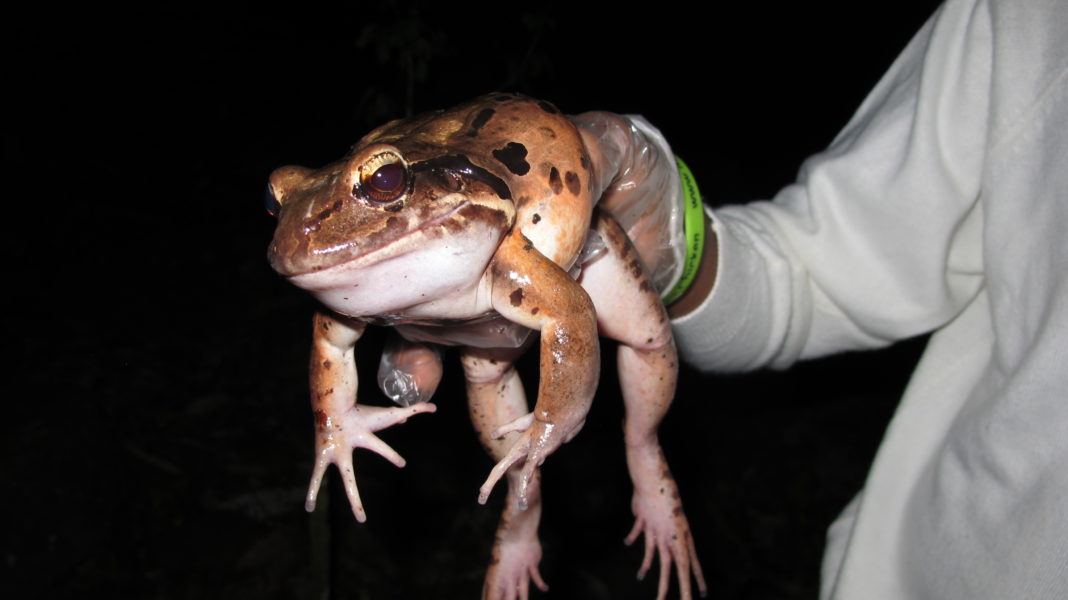Whew, what a few months. 2014 has been an exciting and busy few months for the MC Team based in Dominica. This year has seen the start of the most intensive field surveying carried out since Chytridiomycosis first arrived on the Island in 2002!
The numbers of wild mountain chickens remaining in Dominica have been an unknown quantity for a while now. We have known of scattered remnants of these elusive night-time predators, but no-body has been able to figure out how many remain or how they are managing to survive.
Well, this is something that the team are attempting to examine. Every fortnight we visit three core sites that have been chosen as the best locations to study populations of frogs. Beginning in January we geared up and headed out with our head torches and field equipment to see if we could find some of these giant frogs. We were ecstatic to discover a few locations with small but seemingly healthy populations. The first visit of the year to one site yielded an amazing six frogs in one evening, even better three of them were juveniles likely born in the previous breeding season, a promising start indeed!!
Each frog that is caught is swabbed to test for the presence of Chytridiomycosis. Morphological information such as leg length, weight and snout vent length are recorded. If the animal is one that we have not found before, it is tagged with a unique identifying chip, known as a PIT tag. This allows us to identify each individual every time we catch us, essential information for assessing the impact of the disease as well as the overall population size.
Since then we have continued to find new individuals, a total of twenty-five unique frogs found this year so far. While this may seem like a small number, we are currently out of breeding season and so finding the frogs is a lot harder without their distinctive calls to help guide the way. As we move towards the breeding season we hope these numbers will increase. Of course, we must always keep in mind that these animals were once so numerous that people were literally tripping over them in their back gardens, so we really are talking about a tiny fragment of that original population. These really are rare animals!!!
The team are hoping that the data we are gathering will enable us to work out whether these surviving frogs have simply been lucky and managed to avoid catching Chytrid or whether they are surviving with the presence of the disease!!
Of course we’ll keep you updated through the year as the field work continues.







